Who Is Le Pho?
Le Pho was born in 1907 in Hanoi, the capital of what was then French colonial Vietnam. Growing up in a family that valued education and culture, Le Pho was introduced to the world of art at an early age. His family, particularly his father, a Confucian scholar, was supportive of his artistic ambitions. In the early 20th century, Vietnam was undergoing a complex transformation, and the art world reflected the influence of both traditional Vietnamese practices and European styles introduced during French colonial rule.
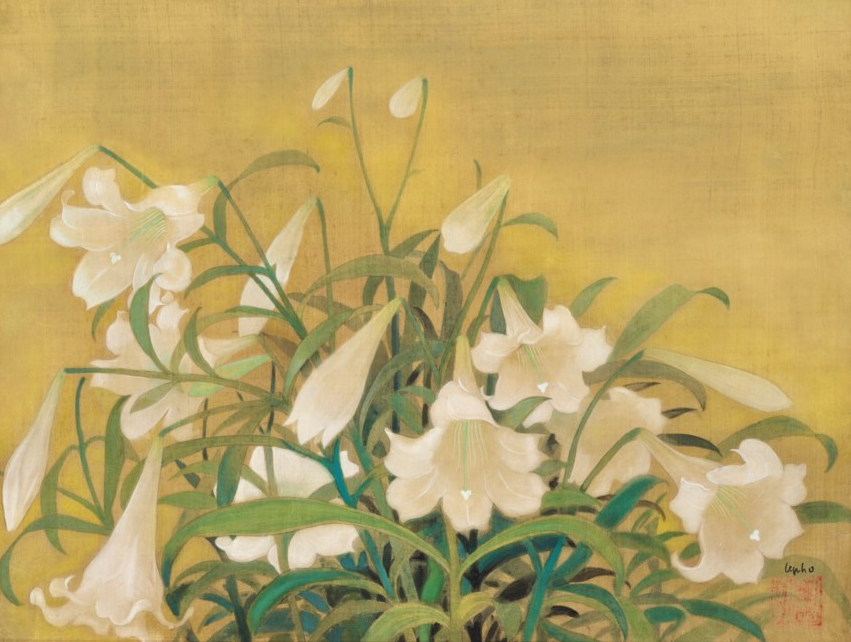
At the age of 18, Le Pho enrolled in the École des beaux-arts de l’Indochine (School of Fine Arts of Indochina) in Hanoi, an institution founded by the French colonial government in 1925 to train local artists in Western-style painting. The school became an important cultural crossroads, where Vietnamese artists were trained in European techniques while also exploring their own traditional art forms. Here, Le Pho honed his skills in oil painting, drawing, and design, and became well-versed in both traditional Asian painting and Western artistic practices such as realism and impressionism.
His time at the École des beaux-arts was pivotal. Le Pho’s exposure to Western art styles like impressionism, post-impressionism, and later modernism, was crucial in shaping his artistic identity. However, he did not abandon his Vietnamese heritage. Instead, he sought to blend the two worlds, creating a unique artistic language that captured both the beauty of traditional Vietnamese culture and the influence of modern Western techniques.
Le Pho – The Master of Silk Painting
Le Pho’s silk paintings are perhaps his most well-known works, and they offer a distinct interpretation of his creative style. This technique was one of the most important innovations in the Vietnamese artistic scene during the colonial period. Silk, with its rich texture and luminosity, became the medium of choice for many artists in the 20th century.
Silk, with its natural sheen and texture, was an ideal medium for Le Pho, allowing him to produce paintings that possess a unique ethereal quality. His mastery of this material enabled him to achieve a sense of lightness and grace, with colors that seem to glow from within. His silk paintings often depict serene landscapes, elegant portraits of women, and traditional Vietnamese symbols, each infused with a tranquil and meditative atmosphere. Le Pho’s meticulous attention to detail, soft brushwork, and subtle use of color made his silk paintings stand out as both visually stunning and deeply symbolic.

Le Pho’s ability to manipulate the silk surface was remarkable. Unlike traditional canvas, silk absorbs paint in a way that creates a fluid, almost translucent effect, which Le Pho skillfully used to evoke a sense of depth and movement. His works exude a timeless quality, with each brushstroke contributing to the overall sense of harmony and balance. The medium allowed him to create compositions that appear delicate yet full of life, capturing the essence of his subjects in a way that is uniquely his own.
Fusion of Vietnamese Tradition and Western Modernism in Le Pho’s Art
Le Pho’s work stands out for its ability to seamlessly merge traditional Vietnamese themes and techniques with Western artistic innovations. Trained at the École des beaux-arts de l’Indochine in Hanoi, Le Pho was exposed to both Vietnamese cultural traditions and European modernism. His work represents a harmonious blend of these two influences, allowing him to reinterpret Vietnamese motifs, such as landscapes, figures, and nature, in a modern context.
His art reflects the subtle beauty of Vietnamese traditions, such as the portrayal of graceful women in traditional áo dài (Vietnamese dress), alongside techniques drawn from Western Impressionism and Post-Impressionism. This merging of East and West creates an aesthetic that is both culturally rich and globally relevant.
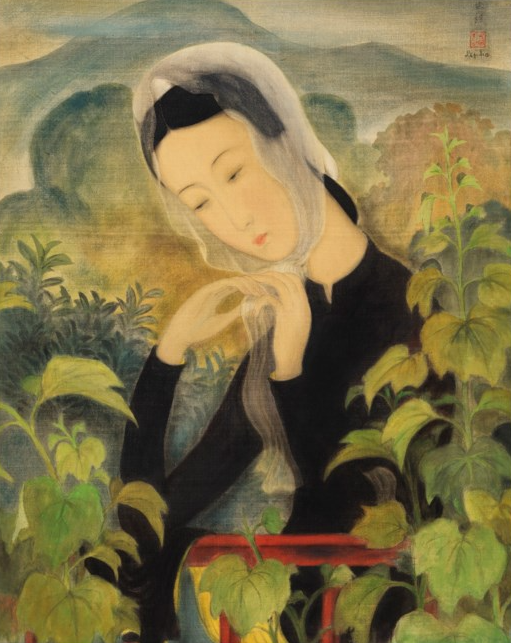
One of Le Pho’s most distinctive features is his use of silk as a medium. Silk painting was a prominent technique in Vietnam during the colonial era, and Le Pho became one of its most celebrated practitioners. The luminous quality of silk enhanced the delicate textures and colors in his work, making his paintings appear almost ethereal.
Silk allowed him to achieve a remarkable level of depth and lightness in his compositions. The natural sheen of the fabric reflected light, creating a sense of softness and fluidity in his works, particularly in the depiction of figures and landscapes. His mastery of this medium elevated it to new heights, and his silk paintings are among his most famous and sought-after works.
Graceful Depictions of Vietnamese Femininity
Le Pho’s portraits often feature women in traditional Vietnamese attire, such as the áo dài, a form-fitting dress that has become an enduring symbol of Vietnamese femininity. These figures, rendered with soft brushstrokes and delicate lines, exude an air of serenity and introspection. His women are typically shown in contemplative poses, either seated or standing, with calm expressions that suggest inner peace and reflection. This peaceful, meditative portrayal reflects the ideal of grace and dignity in Vietnamese culture, elevating the female form beyond mere physical beauty to an expression of spiritual and emotional depth.
The women in Le Pho’s paintings often appear timeless, as though they exist outside the boundaries of time. Their serene faces, quiet elegance, and graceful movements convey a sense of quiet power, embodying the notion of feminine wisdom and inner strength. This portrayal of women as both ethereal and grounded made his works stand out, as they offered an alternative to the more conventional, often idealized depictions of women in art during his time.
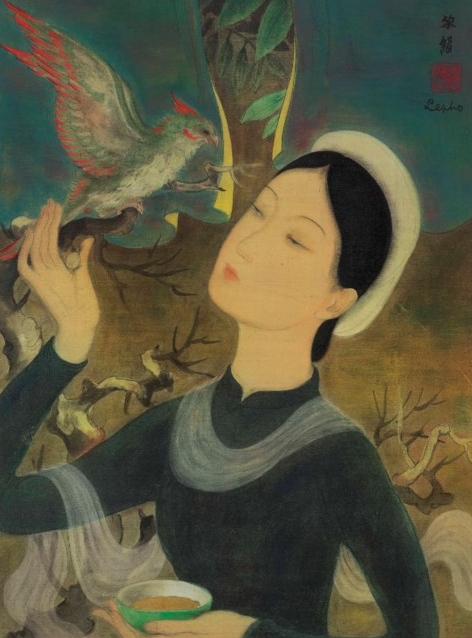
In Le Pho’s work, women are more than just subjects of beauty; they represent a broader cultural and symbolic significance. The lotus flower, a symbol of purity and enlightenment in Vietnamese culture, frequently appears in his paintings alongside female figures. This association suggests that the women in his portraits are not just physical beings but embodiments of spiritual purity and intellectual depth.
Le Pho’s use of women in his art reflects his admiration for the role they played in Vietnamese society. At a time when traditional gender roles were firmly in place, his portraits celebrate the grace and dignity of women, offering a vision of feminine strength that transcends the conventional. These works also reflect his deep connection to Vietnamese culture and heritage, as women often represent the nurturing and preserving force within families and communities.
Vietnamese culture in Le Pho’s Art
Le Pho’s art is often imbued with a sense of spirituality, reflecting the deep influence of Vietnamese philosophy, particularly Buddhism and Confucianism. The quiet, meditative quality of his work invites the viewer to engage with deeper, introspective thoughts, much like the meditative practices of Vietnamese spirituality. His depictions of women often carry a serene, almost ethereal quality, which resonates with the Buddhist ideals of inner peace, humility, and wisdom. These figures are not just representations of physical beauty but are imbued with a sense of spiritual grace that is at the core of Vietnamese cultural and religious beliefs.
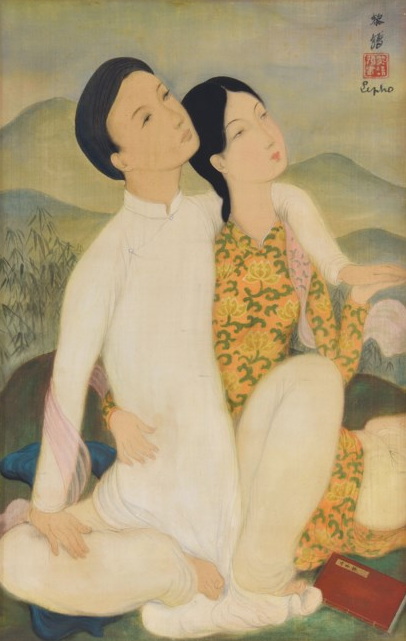
Le Pho’s use of soft, diffused light and his focus on the tranquil, harmonious aspects of daily life reflect Confucian ideals of balance and order. In Confucian thought, the concept of harmony between humans and nature is paramount, and this is often echoed in the calm and balanced compositions of Le Pho’s work. Whether depicting a woman in traditional attire or a peaceful landscape, his art evokes a sense of calm and equilibrium, symbolizing the core values of respect for nature and human dignity that define Vietnamese cultural identity.
Le Pho’s works are often described as possessing a quiet, poetic quality. His ability to capture emotion through subtle gestures and expressions distinguishes his art. Whether in his portraits of women or his serene landscapes, his paintings convey a profound sense of tranquility and contemplation. The emotional depth of his works often emerges through the figures’ soft, graceful poses and their serene, introspective expressions. This poetic approach to painting reflects Le Pho’s sensitivity to both his subjects and his medium. His works seem to capture fleeting moments of beauty and contemplation, inviting viewers to engage with them on an emotional and spiritual level.

Le Pho’s Legacy and Lasting Impact
Le Pho’s work was a key factor in shaping modern Vietnamese art and establishing a national artistic identity in the mid-20th century. Before the advent of modern art in Vietnam, much of the nation’s artistic traditions were rooted in centuries-old techniques, often influenced by Chinese and indigenous practices. Le Pho’s art, however, blended these traditions with European modernism, giving rise to a new artistic expression that was distinctly Vietnamese yet globally relevant.
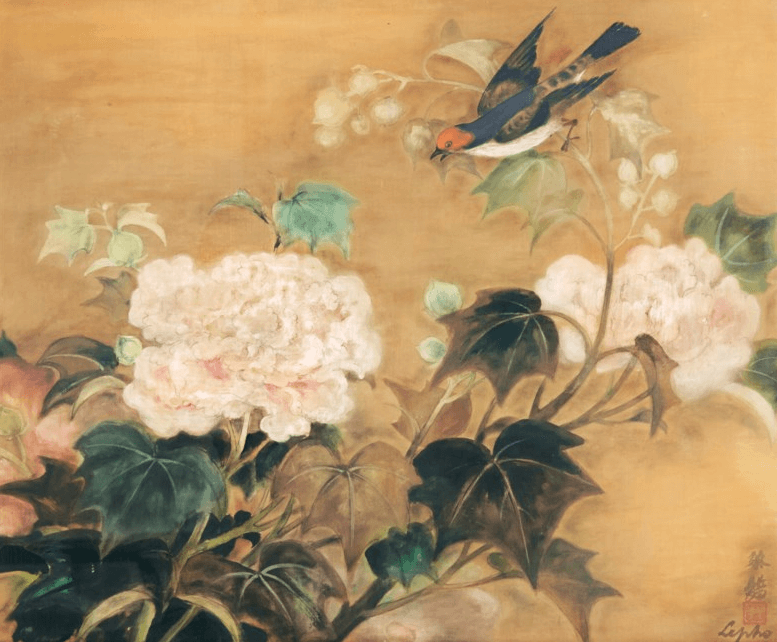
His success in fusing Eastern traditions with Western artistic movements helped set the stage for the development of modern Vietnamese art. As an artist who maintained a strong connection to his cultural roots while embracing contemporary trends, Le Pho inspired a generation of Vietnamese artists to explore new techniques, materials, and themes while still honoring their heritage. This paved the way for the rise of other significant Vietnamese artists in the 20th century, including those from the Hanoi and Saigon schools, who continued to experiment with the intersections of tradition and modernity.
Furthermore, Le Pho’s success abroad helped foster a sense of pride in Vietnam’s cultural heritage and contributed to the country’s emerging national identity in the post-colonial era. In an age when Vietnam was undergoing rapid political and social change, Le Pho’s art became a powerful symbol of national resilience, artistic innovation, and cultural continuity.


Pingback: Mai Trung Thứ: The Timeless Beauty of Vietnamese Silk Painting – Phan Ling Gallery